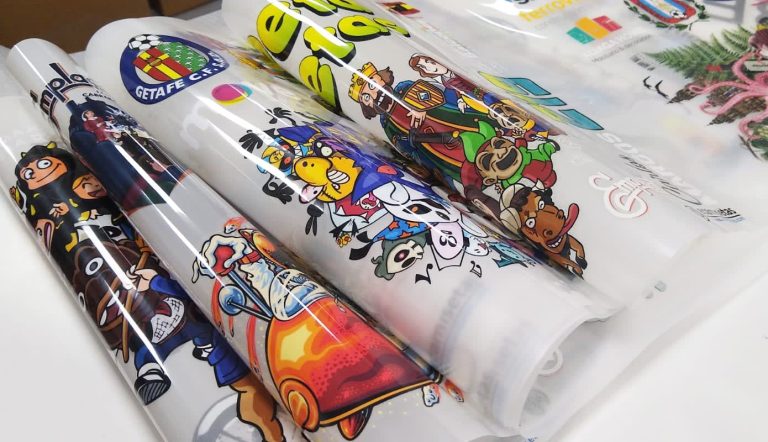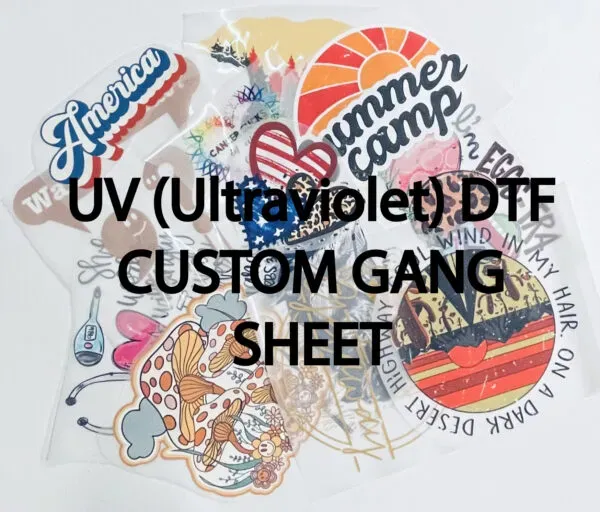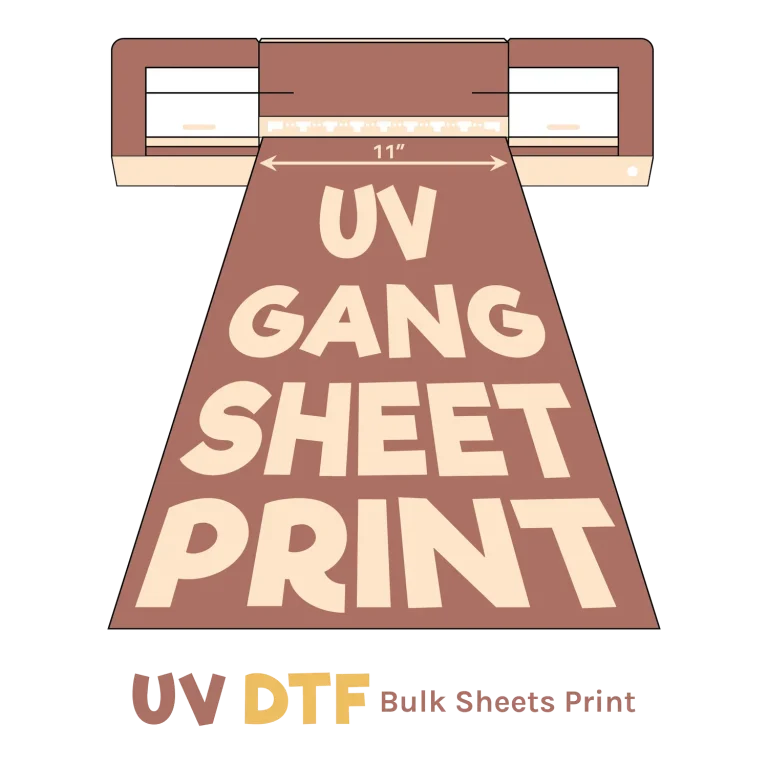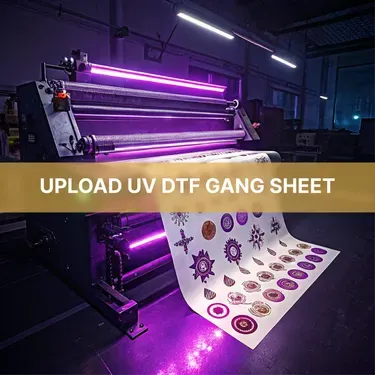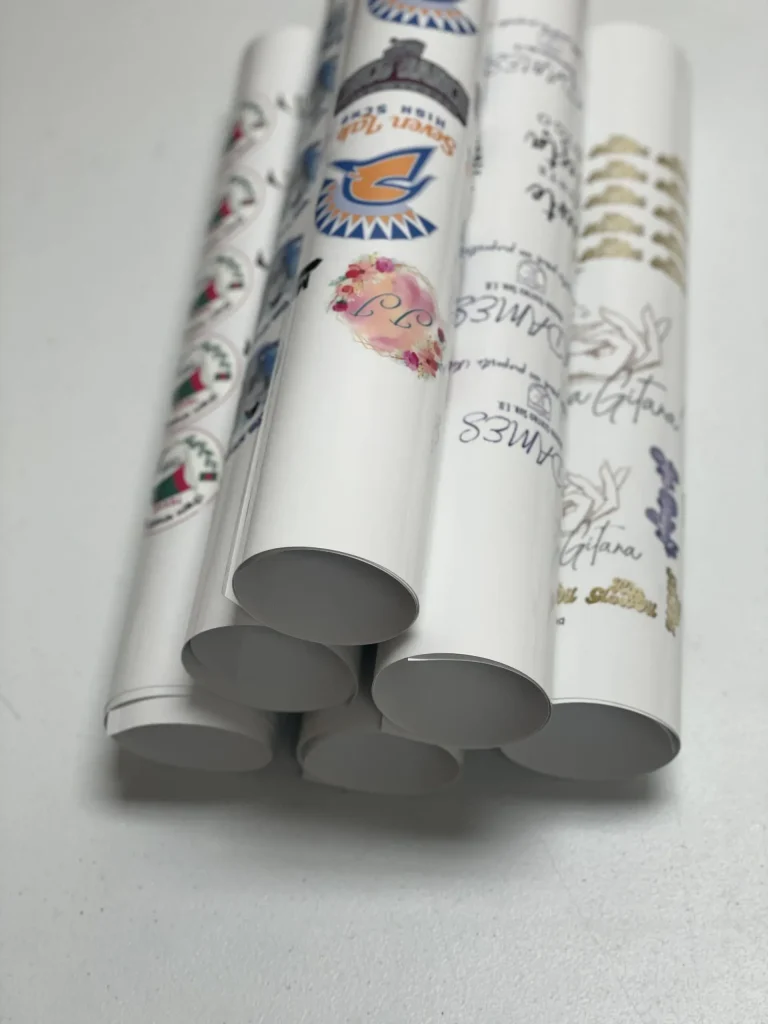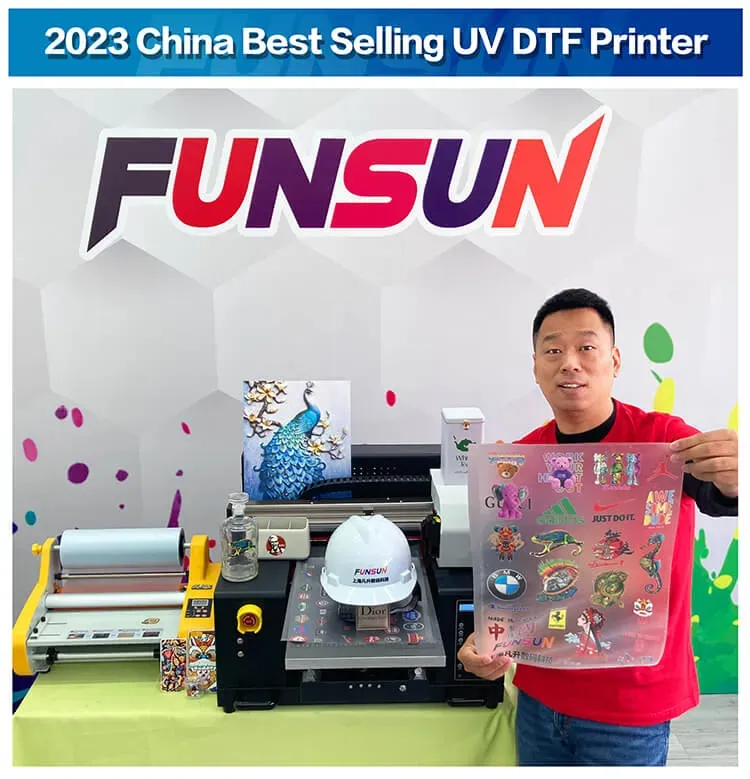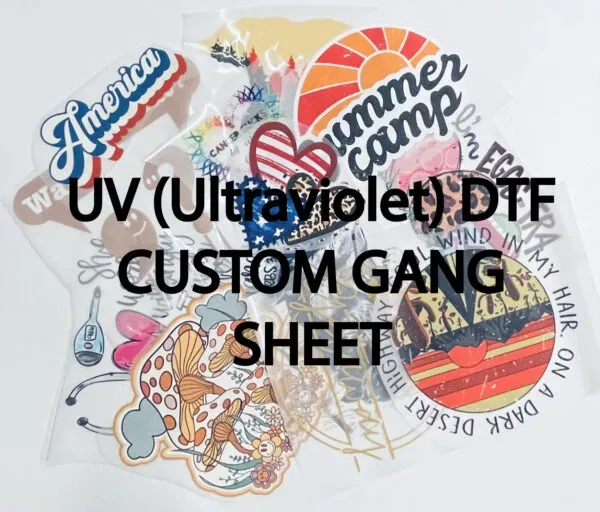
UV DTF gangsheet is transforming how businesses approach printing, merging efficiency with high-quality outputs. As companies look to optimize their production, understanding UV printing technology has become essential. This innovative method utilizes ultraviolet cured inks that allow for vibrant, durable prints on a myriad of substrates. Choosing UV DTF over traditional printing methods not only enhances the final product but also supports sustainable printing practices that appeal to today’s eco-conscious consumers. In this guide, we will delve into key considerations when selecting your UV DTF printer and gangsheet, ensuring you make the best investment for your business.
The concept of UV Direct to Film (DTF) gang sheets is a game changer in the modern printing landscape. By leveraging the power of ultraviolet technology, this approach offers a seamless way to produce high-resolution images on various materials. Businesses are increasingly discovering how beneficial it is to utilize alternative printing techniques like those employed in UV DTF applications, which stand out for their quick drying times and exceptional print quality. As the demand for customized products surges, understanding the nuances of choosing the right DTF printing solutions becomes crucial for gaining a competitive edge in the market.
Exploring UV DTF Printing Technology and Its Advantages
UV DTF printing technology represents a significant leap forward in the printing industry, particularly for businesses seeking to produce high-quality visuals on a variety of substrates. The process involves using UV-cured inks that dry almost instantaneously, eliminating the wait time typically required with traditional printing methods. This rapid drying further allows for vibrant colors and crisp details, making it ideal for products intended for visual impact, such as apparel and promotional items.
In addition to speed, one of the most notable advantages of UV DTF printing is its versatility. Compared to conventional methods, businesses can print on a wider range of materials including textiles, metal, glass, and plastics, opening avenues for unique product offerings. This diversity not only sets a business apart in a competitive market but enhances overall productivity by minimizing the need for multiple specific printers, thereby reducing investment and operational costs.
Key Factors to Consider When Choosing UV DTF Gang Sheets
When selecting UV DTF gang sheets, evaluating material compatibility is foundational. Businesses must identify the substrates they intend to print on, as this significantly influences the choice of gang sheets. Conducting test prints on various materials not only helps ascertain optimal adhesion but also highlights the print performance you can expect. This crucial step prevents unexpected issues during production, which can lead to wasted resources and unfulfilled client expectations.
Furthermore, the quality of prints produced is critical for maintaining your business’s reputation in the market. All UV DTF printers and inks vary in their outputs, and thus reviewing samples from different suppliers can help you gauge which options meet your quality standards. If targeting high-end clientele, it’s paramount that the vibrancy and clarity of your printed designs are exemplary; achieving this may necessitate investing in higher-caliber printers and gang sheets.
The Importance of Print Quality in UV DTF Printing
Print quality serves as a cornerstone for business success in the UV DTF printing sector. Any final print should reflect the sharpness and detail expected from high-quality production techniques, as this directly correlates with customer satisfaction. Evaluating samples from potential suppliers allows businesses to determine not only the aesthetic appeal of prints but also their durability in various applications.
Moreover, the ability of a UV DTF printer to reproduce colors accurately plays a vital role in branding and marketing. Businesses should prioritize equipment that utilizes advanced technology to prevent issues like color fading or misalignment during the printing process. Investing in a reliable UV DTF printer that consistently delivers superior print quality adds to the long-term viability of your services and can ultimately lead to increased customer loyalty.
Evaluating Efficiency and Speed in Production
In the competitive landscape of the printing industry, efficiency often dictates business success. When assessing UV DTF gang sheets, consider the printing speed and the curing times of the printers you are evaluating. A system that balances speed without sacrificing quality can significantly enhance production throughput, enabling companies to meet tight deadlines.
Additionally, optimizing workflow is essential in minimizing downtime and maximizing productivity. Implementing printers with faster curing processes can streamline operations, allowing for the swift transition between printing jobs and ultimately better turnaround times for clients. This efficiency not only improves customer satisfaction but can also enhance your business’s reputation for reliability in an industry where timing is crucial.
Understanding Cost and Return on Investment (ROI) with UV DTF
Choosing UV DTF gang sheets involves a careful analysis of costs associated with their purchase and operation. While the initial investment in a high-quality UV DTF printer and compatible gang sheets may seem substantial, it is vital to assess the overall cost per print alongside factors like maintenance and supplies. This comprehensive evaluation will help determine the total cost of ownership and its impact on your business’s bottom line.
Beyond costs, understanding the potential return on investment (ROI) is critical when selecting equipment and materials. Businesses should seek solutions that not only fit their current needs but also possess scalability for future growth. Opting for versatile, efficient, and high-quality UV DTF printers and gang sheets can lead to increased productivity, reduced wastage, and ultimately, higher profitability in the long run.
Sustainability in the UV DTF Printing Process
In the face of growing environmental challenges, many businesses are prioritizing sustainability in their operations. When selecting a UV DTF gang sheet, consider eco-friendly inks and practices that minimize environmental impact. Innovations in printing technology have led to the development of non-toxic inks and demand for sustainable manufacturing processes, allowing companies to align themselves with increasing consumer preference for environmentally responsible products.
Embracing sustainable printing not only helps the planet but can also enhance brand reputation. Businesses that adopt responsible practices can attract eco-conscious customers, differentiating themselves in a crowded marketplace. By integrating sustainability into your UV DTF printing operations, you demonstrate a commitment to social responsibility while potentially opening up new marketing avenues to leverage your dedicated efforts.
Frequently Asked Questions
What is UV DTF gang sheet and how does it work?
A UV DTF gang sheet refers to a large area of film printed using UV Direct to Film (DTF) technology, allowing for the transfer of high-resolution graphics onto various surfaces. The process involves printing with UV-cured inks that dry quickly and provide vibrant, durable prints suitable for multiple substrates, including textiles and hard surfaces.
How do I choose the right UV DTF gang sheet for my printing needs?
When selecting a UV DTF gang sheet, consider factors such as material compatibility, print quality, efficiency, and cost-effectiveness. Testing prints on different substrates can help determine the best choice, while evaluating the UV DTF printer’s capabilities is crucial for achieving desired results.
What are the benefits of using UV DTF printing technology?
UV DTF printing offers numerous benefits, including fast curing times, vibrant colors, and the ability to print on diverse materials. This technology enhances production efficiency, reduces waste, and supports sustainable printing practices through the use of eco-friendly inks.
How does UV DTF printing compare to traditional DTF printing?
Unlike traditional DTF printing, which often uses water-based inks that require more drying time, UV DTF printing utilizes UV-cured inks that dry instantly. This results in faster production rates and higher print durability, making UV DTF more efficient for high-volume printing.
What should I look for in a UV DTF printer for optimal performance?
For optimal performance, look for a UV DTF printer that offers high print quality, fast curing speeds, efficient software features, and solid manufacturer support. It’s also important to consider the printer’s ability to handle a variety of substrates and its scalability to grow with your business needs.
Are there eco-friendly options available in UV DTF printing?
Yes, many UV DTF printing solutions are now designed with sustainability in mind. By choosing printers that utilize environmentally friendly inks and practices that reduce emissions, businesses can implement sustainable printing practices while still achieving high-quality results.
| Key Considerations | Details |
|---|---|
| Material Compatibility | Evaluate materials commonly used, ensure gang sheets work with fabrics, plastics, and more. |
| Print Quality | Review samples and conduct test prints to ensure vibrancy and detail meet standards. |
| Efficiency and Speed | Consider printing speed and curing times to enhance production capabilities. |
| Cost and ROI | Analyze total cost of ownership and potential ROI for long-term financial planning. |
| Software Features | Look for user-friendly software for design tasks, scheduling, and workflow management. |
| Manufacturer Support | Investigate support offerings, warranty, and training from manufacturers. |
| Sustainability Factors | Consider eco-friendly practices and inks to enhance brand image and reduce emissions. |
Summary
Choosing the right UV DTF gangsheet for your business is a significant step in maximizing your printing capabilities. It involves understanding various factors such as material compatibility, print quality, and efficiency, alongside considering the overall costs and sustainability practices. By making informed decisions based on the latest innovations and reliable support, businesses can enhance not only their operational effectiveness but also their market appeal, paving the way for future growth in the competitive printing industry.

